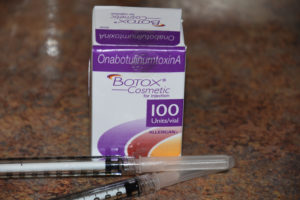
There are, however, undesired aesthetic consequences from Botox that prove that facial expressions are complex and can easily be imbalanced to create peculiar aesthetic appearances that many find unattractive and want to avoid. At the least they are the telltale signs of having had Botox injections.
Spock Eyebrow The famous “Spock eyebrow,” also referred to as the evil eyebrow, leaves people with a consistent angry look on their face. It is the result of glabellar injections or treating the 11s. The glabellar creases are formed because of the actions made by both the procerus and corrugator muscles, pulling the eyebrows inward. If the frontalis muscle is also injected directly above the procerus, this will paralyze the entire central forehead and brows, causing the medial brows to drop and the lateral brows to remain high. In addition, there may be residual small horizontal wrinkles left above the lateral brows. Treatment for the “Spock eyebrow” can be done by injecting the frontalis muscle laterally above the eyebrows to help lower them to the same level as the medial brows. This treatment will also eliminate the small horizontal wrinkles above the lateral brows as well.
Frozen Face A heavy forehead and brows is also another unaesthetic sequelae from Botox injections. This is also commonly referred to as a “frozen face” or being left with the feeling an elephant is sitting on one’s forehead. This can occur when many areas of the forehead are injected from the glabellar creases, horizontal forehead lines and the crow’s feet. When all three areas are treated, people are often left with the appearance of a “frozen face” because all that appears to move is the mouth. Although this is the look some people are after with Botox treatments, often times it is not. This proves that it is possible to have too much of a good thing.
Heavy Brows When injecting the glabellar creases in addition to the forehead it is important not to block the frontalis muscle directly above the procerus as well as not to over inject (use too many units) in the frontalis muscle as a whole. When too many units are used, the muscles become so relaxed that the brows become heavy and sag lower. In a patient who already has some degree of hooding, it doesn’t take much Botox to potentially tip the balance towards further brow ptosis. of It is important to assess a patient prior to injection, paying close attention to the amount of hooding that may or may not already be present in the upper eyelids. The administration of too many units can easily make this hooding worse, and leave the patient feeling they have heavy brows.
The only treatment for heavy brows or the frozen face is time. While Botox normally takes a full three to four months to wear off, fortunately these adverse effects seem to improve more quickly often being much better by six to eight weeks after the initial injections.
Lora Dillman RN
Dr. Barry Eppley
Indianapolis, Indiana


